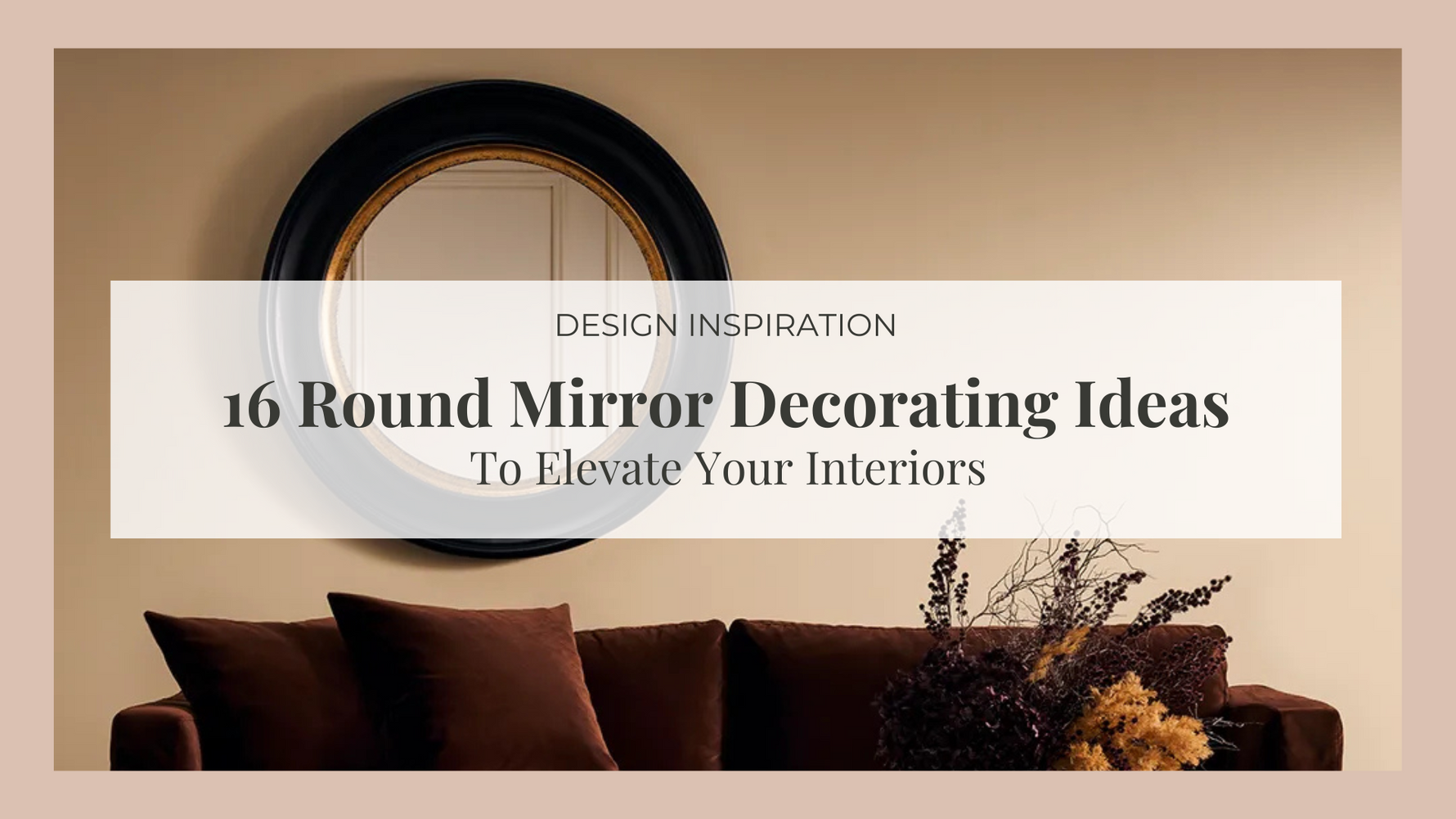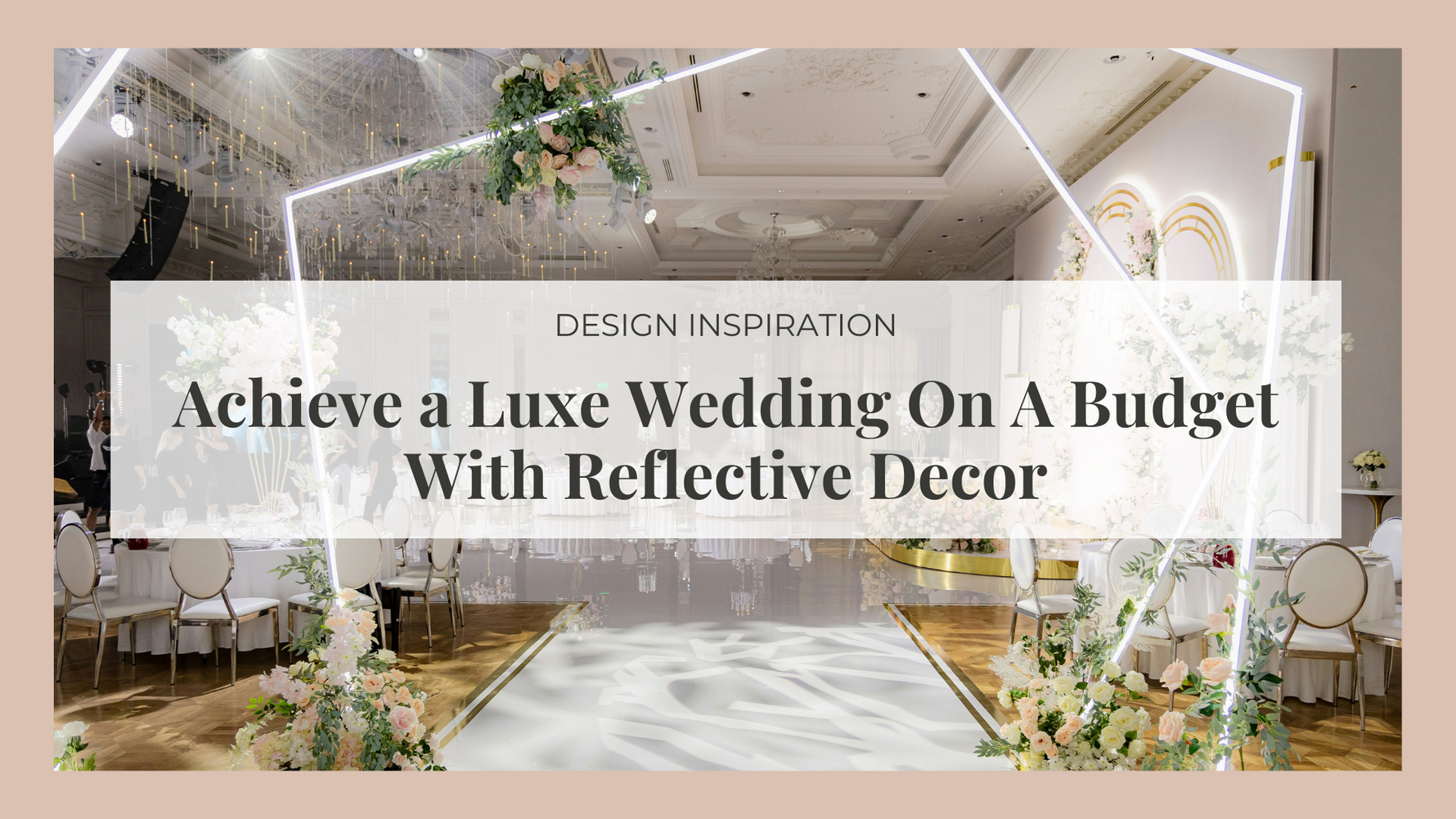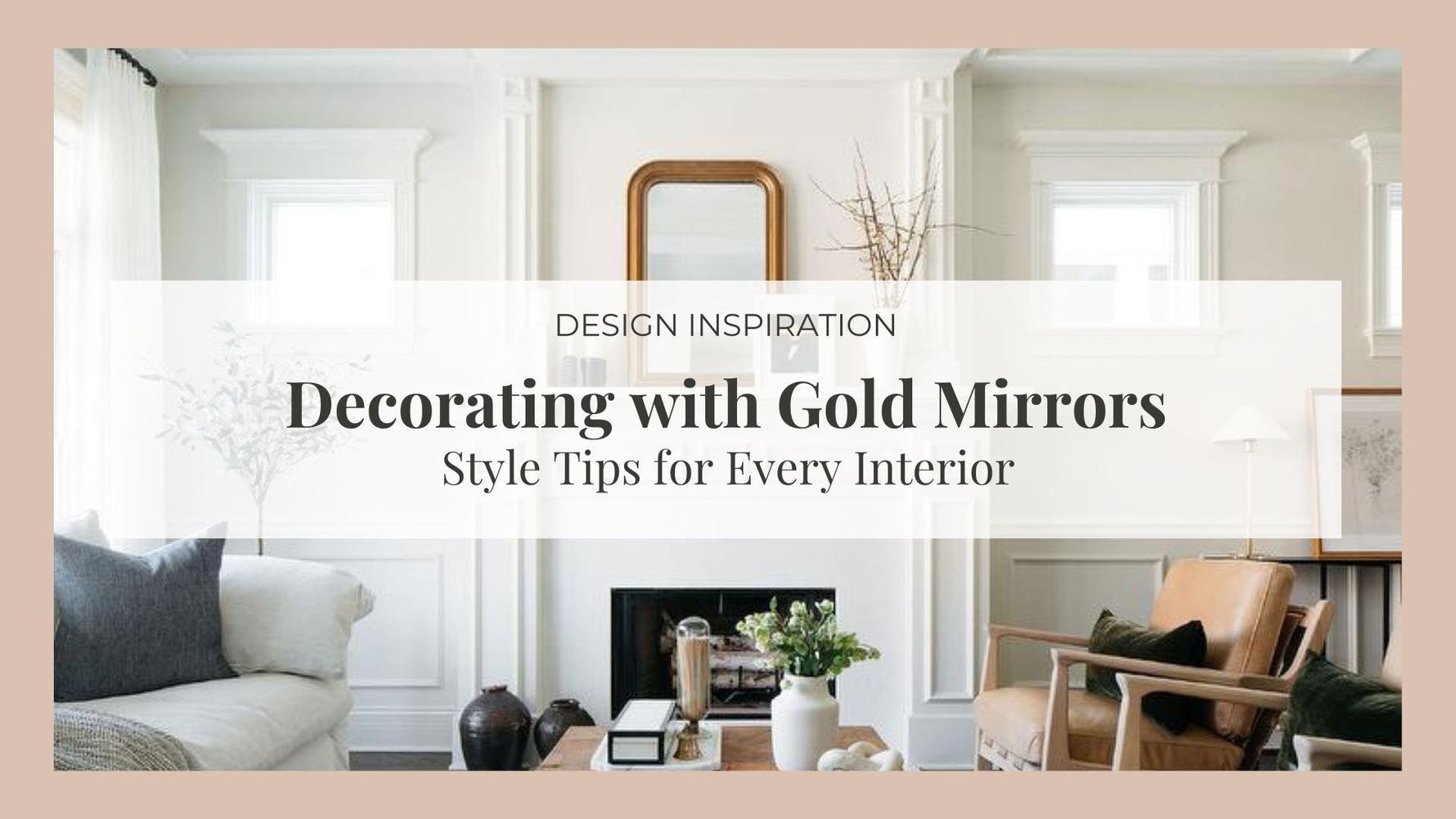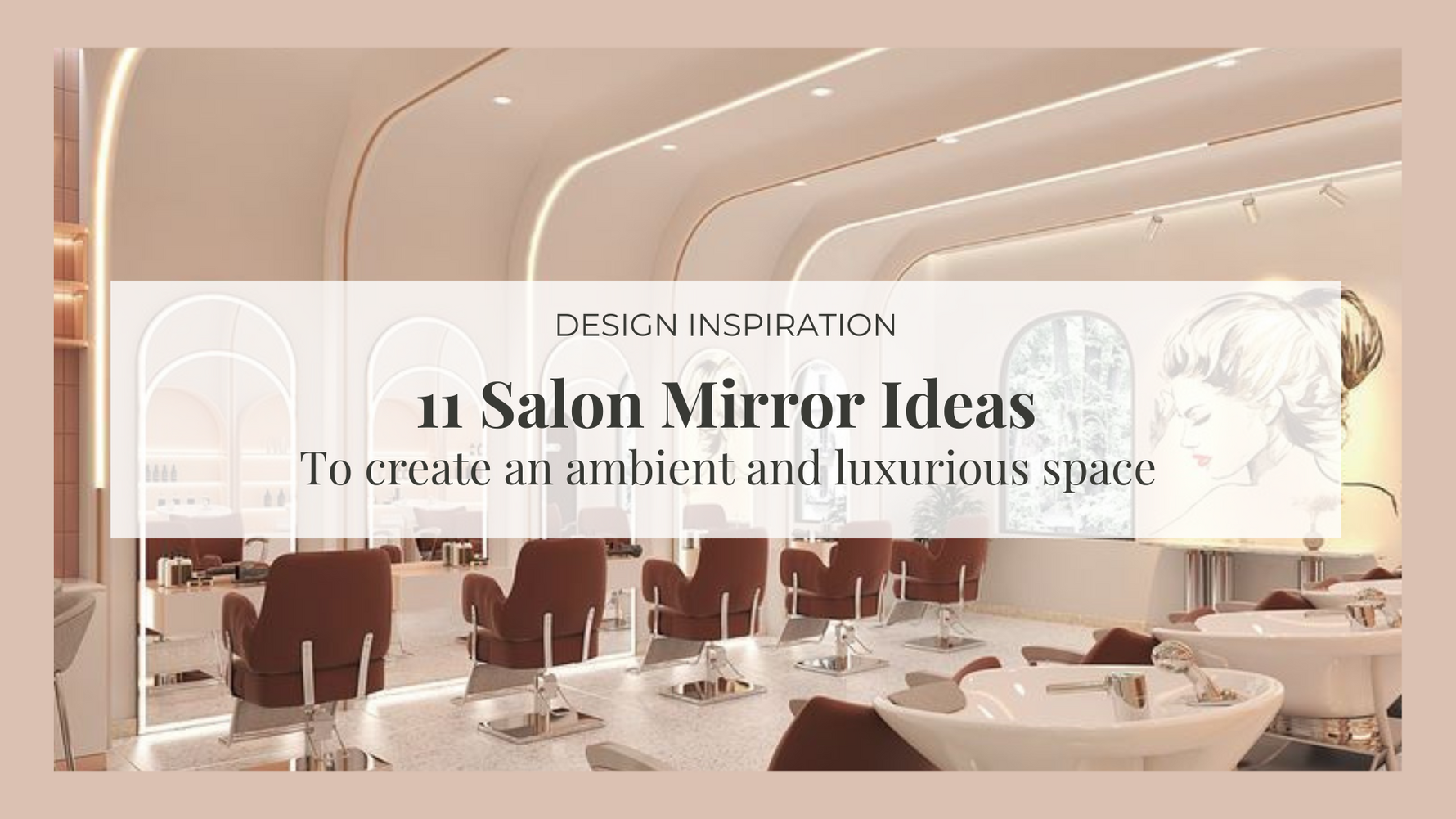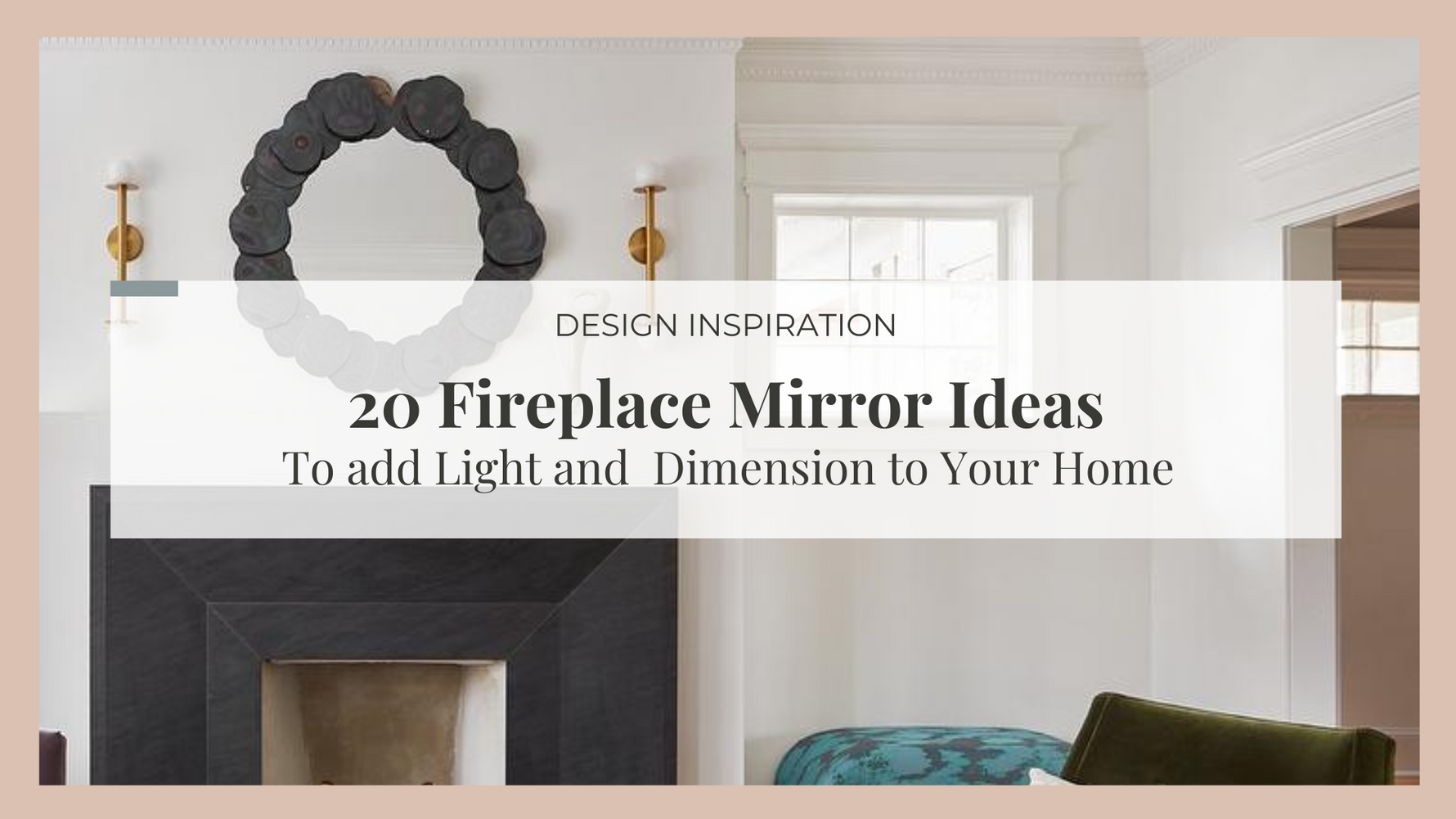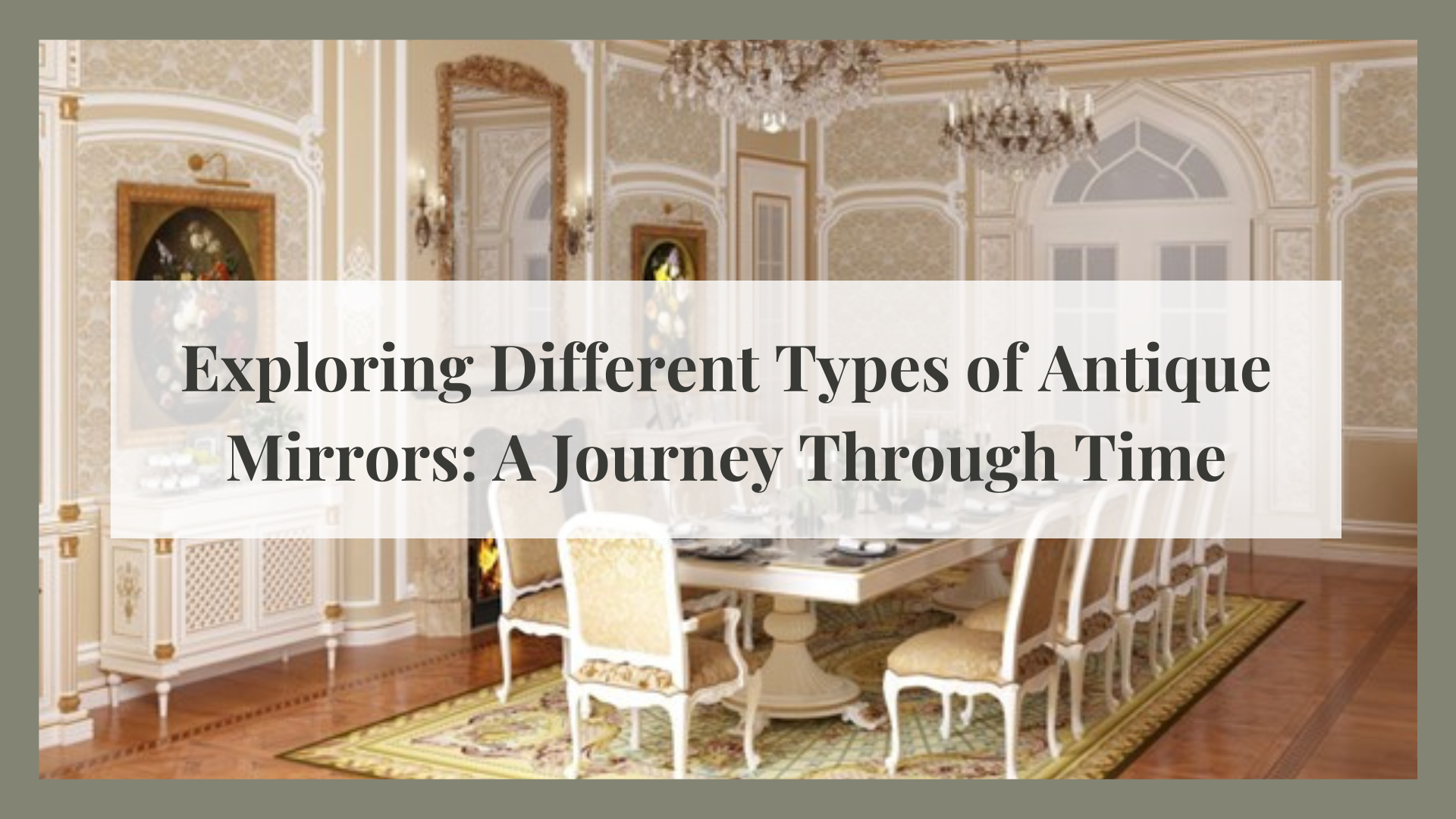
Exploring Different Types of Antique Mirrors: A Journey Through Time
Antique mirrors are much more than mere reflective surfaces—they are windows into the past, each offer a glimpse into the artistry and styles of various historical periods. In this blog post, we will delve into the different types of antique mirrors and their distinctive features, and show you how to incorporate them into your home.
1. Gothic Mirrors
Time Period: 12th to 16th century
Gothic mirrors reflect the architectural style that dominated Europe during the medieval period, especially from the 12th to the 16th centuries. The Gothic style, with its soaring vertical lines and intricate details, had a profound influence on both architecture and decorative arts. The period was marked by the construction of grand cathedrals and castles, characterised by pointed arches, ribbed vaults, rose windows and flying buttresses.


Image: Westminster Abbey in London, a testament to mainly Gothic and Romanesque styles.
Gothic mirrors are known for their elaborate and ornate designs. The frames often feature pointed arches and tracery reminiscent of Gothic cathedrals. Intricate carvings may depict religious or mythical motifs, such as dragons, angels, or saints. The overall design is vertical and elongated, echoing the architectural elements of the time.
Frames were typically made from wood, often oak or walnut, and were sometimes painted or gilded to enhance their appearance. The glass used in Gothic mirrors was less refined than modern glass, sometimes resulting in a slightly distorted reflection due to its hand-blown nature.
Decorating Tips:
Look at your home’s architectural features for inspiration. If you have arched entryways or windows, a gothic-style arched mirror will fit right in. Gothic mirrors are perfect for creating a dramatic focal point in your hallway or entryway above a console table.
- Contrast with Modern Furniture: Combine the mirror with furniture made from natural wood to balance the gothic elements with a warm, organic feel.
- Use in a Monochromatic Scheme: Introduce darker accents like charcoal throw pillows, a black area rug, or dark wood flooring to tie the mirror into the overall design scheme.
- Complement with Subtle Gothic Decor Accents: Incorporate modern lighting with a nod to gothic elements, such as books, spooky decor, candles and chandeliers with a contemporary twist or metal fixtures that echo the mirror’s frame.

Image credit: antiquefarmhouse

2. Baroque Mirrors
Time Period: Late 16th to early 18th centuries
The Baroque period was marked by dramatic expression, grandeur, and a deep sense of movement and tension. Originating in Italy and spreading throughout Europe, Baroque art and architecture were commissioned primarily by the Catholic Church and European monarchies, reflecting power, authority, and religious fervour. Baroque design is characterised by its ornate details, emotional intensity, and bold use of contrasts.

Image: Hall of Mirrors, Palace of Versailles, VCG Wilson / Corbis / Getty Images. An example of traditional Baroque architecture.
Baroque mirrors are distinguished by their ornate and lavish frames, often featuring intricate carvings of acanthus leaves, scrolls, and floral patterns. These mirrors typically have a gold leaf finish, symbolising wealth and grandeur, and are known for their grand scale, designed to make a bold statement. The curvilinear forms and flowing lines characteristic of Baroque design add a sense of movement and drama, while bevelled edges enhance their decorative appeal by reflecting light in a way that further amplifies their opulence.
Decorating Tips:
When incorporating Baroque-style elements into a modern decor scheme, a little goes a long way.
- Balance with Modern Simplicity: Pair the Baroque mirror with sleek, modern furniture to create a striking contrast that adds sophistication and balance to the room. If you prefer a more traditional look, opt for Rococo-style furniture, like curvy velvet-upholstered armchairs and skirted sofas, to complement the mirror's intricate design.
- Stick to a Neutral Palette: Incorporate the mirror into a room with neutral tones, such as whites, greys, or soft beige. This allows the mirror’s opulence to shine without clashing with other elements in the room.
- Mix with Eclectic Elements: For a more eclectic look, blend the Baroque mirror with a variety of styles and décor pieces. The mirror can act as a unifying element, bringing together different design eras and creating a unique, personalised space.

Image: Elizabeth Antique Gold Wall Mirror

Image: Alexandra Antique Silver Floor Mirror
3. Venetian Mirrors
Time Period: 16th to 18th centuries
Venetian mirrors are a hallmark of Renaissance Italy, particularly Venice, known for its exceptional glassmaking techniques. Venetian glassmakers were renowned for their skill and artistry, producing mirrors that were both functional and highly decorative. Venetian mirrors are known for their intricate glasswork, often featuring etched or frosted designs. The frames may be decorated with ornate patterns and sometimes include mirrored elements. The designs are typically elegant and refined, showcasing the craftsmanship of Venetian artisans.

Image: Alison Henry
Decorating Tips:
Venetian mirrors are perfect for adding a touch of classic elegance to formal settings such as dining rooms, luxurious bedrooms, or sophisticated hallways. Their intricate designs and craftsmanship make them a standout feature in any room.
- Minimalist Surroundings: Keep the surrounding décor minimal and modern, allowing the mirror’s intricate etching and reflective surface to stand out.
- Pair with Luxe Materials: Complement the mirror with luxurious materials like velvet cushions, silk drapes, or marble surfaces to enhance the sophisticated look.
- Mix with Contemporary Art: Combine the Venetian mirror with contemporary artwork for a dynamic blend of classic and modern aesthetics.
- Neutral Colour Palette: Use a neutral colour palette, such as whites, greys, or soft metallics, to create a serene backdrop that lets the mirror’s elegance shine.

Image: chairish

Image: Heart shaped venetian mirror
4. Rococo Mirrors
Time Period: Early to mid-18th century
The Rococo period in France was characterised by its playful and ornate designs, emerging as a reaction against the grandeur of Baroque style. Rococo mirrors feature elaborate frames with curvilinear shapes and intricate carvings. The designs are often asymmetrical and highly decorative, incorporating elements such as shells, flowers, and scrolls. The overall effect is one of whimsical elegance and opulence. Frames were typically made from wood and gilded with gold or silver leaf.

Image: Würzburg Residenz – Würzburg, Bavaria, Germany.
This chapel really embodies the excessiveness and exuberance of the Rococo Age.
Decorating Tips:
Rococo mirrors are ideal for creating a sense of grandeur and charm in rooms such as parlours or boudoirs. Their elaborate designs add a touch of sophistication and whimsy to formal spaces. Position the Rococo mirror in a prominent spot, such as above a mantelpiece, in the entryway, or as a statement piece in the dining room. Its ornate, intricate design will instantly draw attention and become the room’s centrepiece.
- Minimalist Furniture: Keep the rest of the décor minimalist, using sleek and functional furniture pieces. This will prevent the room from feeling too busy and will let the Rococo mirror’s beauty take centre stage. Introduce gilded accents in your décor, such as gold-trimmed cushions, metallic table lamps, or gilded picture frames. These will tie in with the mirror’s opulent finish and add a touch of glamour to the space.
- Elegant Details: Add subtle Rococo-inspired accents, like gilded picture frames, crystal chandeliers, or baroque-style cushions. These elements will echo the mirror’s luxurious style and enhance the overall aesthetic without overwhelming the space.
- Curved Lines: Introduce furniture or accessories with gentle, curved lines to complement the mirror’s ornate design. This could include curved sofas, rounded side tables, or soft, flowing drapes.
- Use in a Soft, Luxurious Colour Palette: Consider a soft, luxurious colour palette, using rich pastels like blush pink, dove grey, or soft gold. These colours will enhance the mirror’s ornate frame and create a cohesive, elegant look.

Image: Juliettes Interiors

Image: Juliettes Interiors
5. Louis XVI Mirrors
Time Period: Late 18th century
Named after King Louis XVI of France, these mirrors reflect the neoclassical style that prevailed during his reign. This period was marked by a return to classical simplicity and order, with designs that were both formal and restrained. Louis XVI mirrors feature neoclassical motifs such as laurel wreaths, urns, and ribbons. The design is usually symmetrical and formal, emphasising clarity and refinement. Frames were made from wood and frequently gilded with gold or silver leaf. The glass was often bevelled for a refined finish.
Decorating Tips:
Ideal for formal settings such as grand entryways or dining rooms, Louis XVI mirrors add a classic elegance to traditional spaces. Their refined design complements formal décor and enhances the sense of sophistication in the room.
- Clean Surroundings: Keep the surrounding décor clean and minimalist to allow the mirror’s intricate carvings and symmetrical lines to take centre stage.
- Pair with Modern Furniture: Balance the mirror's ornate style with modern furniture that features straight lines and simple forms for a harmonious mix of old and new.
- Muted Colour Palette: Use a muted colour palette with shades like soft grey, pale gold, or ivory to create a cohesive and sophisticated backdrop that complements the mirror's timeless beauty.

Image: Meg Cassidy Creative

Image: David Skinner Antiques
6. Regency Mirrors
Time Period: Early 19th century
The Regency period in early 19th century Britain was defined by a blend of classical simplicity and refined elegance. During the reign of George IV as Prince Regent, design became synonymous with grandeur and flamboyance. This era was heavily influenced by neoclassical ideas and drew inspiration from various architectural styles, including Greek, Egyptian, Gothic, and Chinese, celebrating artistry in all its forms.
The interiors of the time were characterised by clean lines, balanced proportions, and a preference for muted tones. Decorative wall panels, intricate mouldings, rich wood furnishings, and brass inlays were common, creating a sophisticated and layered look. Mirrors played a significant role in Regency decor, often large and ornate, enhancing the light and sense of space in a room.

Image: Mirt
Regency mirrors often feature geometric shapes, clean lines, and classical motifs such as columns or urns. The designs are straightforward yet elegant, emphasising symmetry and proportion. Frames were commonly crafted from rich woods like mahogany, with occasional gilded accents.
Decorating Tips:
Incorporating a Regency mirror into a modern home can bring a sense of refined grandeur and classic style. Position the Regency mirror in a prominent location, such as above a fireplace or in a grand hallway, to make it a striking focal point.
- Simple Surroundings: Keep the surrounding décor understated and modern to allow the mirror's elegant details and symmetrical design to stand out.
- Pair with Modern Furniture: Combine the mirror with sleek, contemporary furniture to create a balanced contrast between classic elegance and modern simplicity.
- Add Subtle Regency Accents: Incorporate subtle Regency-inspired elements, like neoclassical vases or gilded picture frames, to echo the mirror’s style without overwhelming the space.

Image: Overmantels

Image: Wattpad
7. Georgian Mirrors
Time Period: 1714 to 1830
The Georgian era in Britain, spanning from 1714 to 1830, was a time of elegance and refinement. This period spanned the reign of four consecutive King Georges and saw the rise of neoclassicism, influenced by the archaeological discoveries of ancient Greece and Rome. The Georgian style is characterised by its emphasis on simple geometric proportions, symmetry and classical motifs. During this time, furniture and decorative arts, including mirrors, reflected these ideals.

Image: Georgian townhouses in London - Getty Images

Image: Hyde Park Barracks - an example of Georgian architecture in Australia
Georgian mirrors are known for their classical design elements, including straight, clean lines and symmetry. The frames often feature urns, ribbons, and garlands, reflecting the influence of classical architecture and sculpture. The design is elegant yet restrained, focusing on harmony and proportion. Frames were commonly crafted from rich woods such as mahogany, walnut, or oak, often intricately carved or inlaid with decorative patterns.
Decorating Tips:
By blending the timeless elegance of a Georgian mirror with contemporary design elements, you can create a space that feels both classic and modern, offering a refined yet fresh aesthetic. Position the Georgian mirror in a central location, such as above a fireplace or in the dining room, where it can be admired. The mirror’s classic design will draw attention and serve as a sophisticated focal point.
- Pair with Modern Minimalist Furniture: Balance the mirror’s ornate features with minimalist furniture. Sleek, modern pieces with clean lines will contrast beautifully with the mirror’s intricate design, creating a harmonious blend of styles. Use light wood furniture, such as oak or maple, to complement the mirror’s classic look while keeping the space feeling airy and contemporary.
- Complement with Subtle Georgian Accents: Introduce subtle Georgian-inspired elements like classical vases, candlesticks, or wall sconces. These can echo the mirror’s design without overwhelming the modern feel of the space.
- Textured Fabrics: Incorporate textured fabrics like velvet or linen in throw pillows, drapes, or upholstery to add a touch of traditional elegance in a subtle, modern way.
- Blend with Contemporary Art: Surround the mirror with contemporary art to create an interesting juxtaposition. Large-scale abstract or geometric art pieces will emphasise the mirror’s traditional lines while keeping the overall look fresh.
- Muted Colour Scheme: Consider a monochromatic or muted colour palette to enhance the elegance of the Georgian mirror. Soft blues, greys, or blush tones can create a serene backdrop that complements the mirror's refined aesthetic. Muted metallics—like brushed gold or antique brass—in the décor to echo the mirror’s detailing and add a touch of warmth without overpowering the space.
- Integrate with Contemporary Lighting: Pair the Georgian mirror with modern lighting fixtures, such as a sleek chandelier or pendant lights. This combination will create a sophisticated, layered lighting scheme that enhances both the mirror and the overall room design.

Image: Simon Upton

Image: Owen Gale
8. Art Nouveau Mirrors
Time Period: 1890 to 1910
Art Nouveau emerged in the late 19th century as a reaction against the academic art styles of the 19th century. This movement emphasised organic forms, flowing lines, and a harmonious blend of art and nature. The style was a departure from the rigid forms of the past, embracing fluidity and natural motifs.

Image: Art Nouveau dining room by axxla
Art Nouveau mirrors are renowned for their curvilinear designs that mimic natural forms such as flowers, vines, and insects. The frames often feature intricate metalwork, with designs that flow gracefully and organically. The use of asymmetry and fluid lines is a hallmark of this style. Frames were typically made from wrought iron or wood, with detailed glasswork that might include frosted or stained glass elements. The use of decorative techniques such as enameling and etching added to the mirror’s artistic appeal.
Decorating Tips
Art Nouveau mirrors add a touch of whimsy and artistic flair to spaces such as living rooms or artistic studios. Their unique designs can serve as conversation pieces and enhance the aesthetic of rooms with an emphasis on creativity and elegance.
- Minimalist Surroundings: Keep the surrounding décor minimalist to let the mirror’s intricate lines and curves stand out. A simple, uncluttered space will highlight the mirror’s beauty without overwhelming it.
- Pair with Organic, Modern Furniture: Choose furniture with soft, organic shapes to echo the mirror’s flowing lines. Pieces with curved edges or natural forms will harmonise with the Art Nouveau style, creating a cohesive look.
- Natural Materials: Use natural materials like wood, stone, and rattan to enhance the mirror’s organic aesthetic. These materials will create a warm, inviting space that feels both modern and connected to nature.
- Nature-Inspired Décor: Incorporate accents that reflect the Art Nouveau movement’s love for nature, such as botanical prints, floral-patterned cushions, or decorative vases with organic shapes. These elements will echo the mirror’s design and add a cohesive, artistic touch.
- Decorative Lighting: Consider adding lighting fixtures with an Art Nouveau influence, like lamps with stained glass shades or sconces with flowing, sculptural forms. These will enhance the mirror’s presence and contribute to an overall theme of organic elegance.
- Use in a Warm, Earthy Colour Palette: Consider using a warm, earthy colour palette, with shades like terracotta, olive green, and soft browns. These colours will complement the natural motifs of the Art Nouveau mirror and create a cosy, harmonious environment.

Image: tileclub

Image: interior-design.biz
9. Edwardian Mirrors
Time period: 1901 - 1910
The Edwardian period followed the Victorian era and was characterised by a shift towards lighter and more airy designs. Named after King Edward VII, this period was marked by a move away from the heavy, ornate styles of the previous century. Edwardian mirrors reflect this transition with their emphasis on simplicity and elegance. Frames were commonly made from lighter woods such as oak or mahogany. The design is understated yet elegant, reflecting the more relaxed style of the Edwardian period.

Image: Edwardian architecture © Cvanrooyen

Image: The hall at Ashby Manor House - Paul Massey
Decorating Tips:
Edwardian mirrors are well-suited for relaxed yet sophisticated spaces such as modernised dining rooms or bedrooms. Their subtle elegance adds a touch of historical charm without overwhelming the room.
- Pair with Contemporary Furniture: Balance the Edwardian mirror’s gentle curves and intricate details with modern furniture that has clean, straight lines. This contrast creates a harmonious blend of old and new, adding depth to the room.
- Light and Airy Feel: Opt for furniture in light wood or painted finishes, such as white or soft pastel tones, to complement the mirror’s timeless elegance while maintaining a fresh, contemporary feel.
- Add Subtle Edwardian Accents: Incorporate subtle Edwardian-inspired accents, like simple floral arrangements in vintage vases, delicate lace or embroidered cushions, and classic table lamps. These touches will echo the mirror’s period charm without overwhelming the modern aesthetic.
- Sophisticated Fabrics: Use sophisticated fabrics such as silk, velvet, or damask in your soft furnishings to add a layer of luxury that complements the mirror’s elegant design.
- Use in a Soft, Muted Colour Palette: Consider a soft, muted colour palette with pastel hues, such as dusty pink, sage green, or powder blue, to enhance the Edwardian mirror’s gentle beauty. These colours evoke the elegance of the Edwardian era while feeling fresh and modern.
- Gentle Metallics: Introduce gentle metallic accents, like brushed nickel or antique gold, in light fixtures, picture frames, or small decorative objects. These metallics will harmonise with the mirror’s frame and add a touch of understated glamour.

Image: Edwardian mirror above dresser

10. Art Deco Mirrors
Time Period: 1920s to 1930s
Art Deco emerged in the 1920s and 1930s as a glamorous and modern style that bridged the gap between traditional and contemporary aesthetics. This style is known for its geometric shapes, luxurious materials, and a sense of opulence. Art Deco mirrors feature bold geometric patterns, sunburst motifs, and sleek lines. The designs often incorporate elements of luxury and sophistication, reflecting the exuberance of the era. Frames were typically crafted from polished metals, glass, and sometimes mirrored elements. Geometric patterns and inlays were common, adding to the mirror’s luxurious appeal.

Image: Art Deco Living Room
Decorating Tips:
Art Deco mirrors are perfect for modern or eclectic spaces where a touch of vintage glamour is desired. They work well in contemporary living rooms, stylish foyers, or any room where their distinctive designs can be showcased.
- Minimalist Surroundings: Keep the surrounding décor sleek and minimal, allowing the mirror’s sharp lines and symmetrical patterns to stand out.
- Pair with Luxe Materials: Complement the mirror with luxurious materials like velvet, chrome, or glass to enhance the opulent Art Deco aesthetic.
- Add Geometric Accents: Incorporate geometric patterns and shapes in your décor, such as in rugs, cushions, or artwork, to echo the mirror’s distinctive style.
- Bold Colour Palette: Use a bold colour palette with rich tones like black, gold, and deep jewel colours to create a dramatic backdrop that complements the mirror’s striking design.

Image: Sicily Wall Mirror

Image: A List Interiors
Final Thoughts
From the dramatic Gothic mirrors of the medieval period to the sleek sophistication of Art Deco, each style offers unique design elements and historical significance. By incorporating these timeless pieces into your home, you can create a space that reflects both historical grandeur and personal style. Embrace the charm of antique mirrors and let them become a stunning focal point in your interior design.
